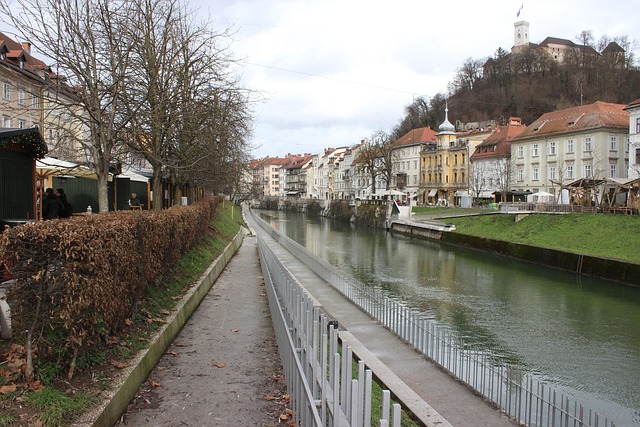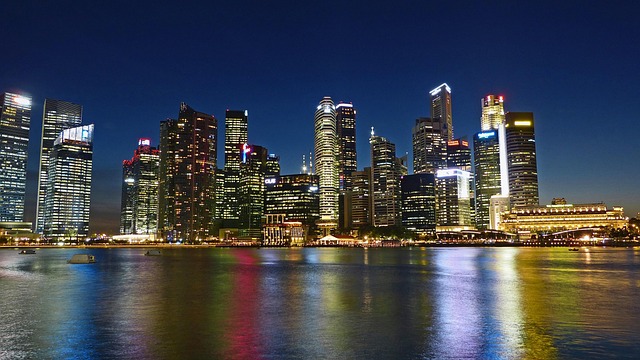Karachi, Pakistan's economic hub, is governed by the Karachi Metropolitan Corporation (KMC), which manages diverse areas from industrial zones to residential neighborhoods. KMC has evolved to address urbanization challenges, overseeing infrastructure, sustainable practices, and vital services like water supply and disaster management. Despite facing issues like rapid growth, corruption allegations, and inequitable access, KMC strives for livable solutions through strategic planning, green spaces, and efficient transportation systems, ensuring Karachi's status as a vibrant South Asian city.
“Karachi, Pakistan’s vibrant metropolis, is governed by the Karachi Metropolitan Corporation (KMC), which wields significant jurisdiction over the city’s urban development. This article delves into the multifaceted realm of KMC governance, offering a comprehensive view from geographical perspectives to historical evolution and current challenges. We explore how KMC shapes Karachi’s landscape, examining its responsibilities, controversies, and the profound impact of its decisions on one of South Asia’s most populous urban centers.”
- Understanding KMC Jurisdiction: A Geographic Perspective on Karachi
- Historical Background: How KMC's Authority Evolved Over Time
- Key Responsibilities and Functions of the KMC Administration
- Challenges and Controversies: Exploring Critical Issues in KMC Governance
- The Impact of KMC Decisions: Transforming Karachi's Urban Landscape
Understanding KMC Jurisdiction: A Geographic Perspective on Karachi

Karachi, a vibrant metropolis and the economic hub of Pakistan, is governed by the Karachi Metropolitan Corporation (KMC), which possesses a well-defined jurisdiction encompassing a diverse range of geographic areas. This jurisdiction is crucial for managing the city’s rapid growth and urban development. The KMC’s reach includes not only the dense urban centers but also outlying suburban regions, ensuring comprehensive governance.
Geographically, KMC’s authority covers a vast area, stretching from the bustling ports in the south to the more residential neighborhoods in the north and east. This expansive jurisdiction demands efficient administration, as it involves balancing the needs of industrial zones, commercial hubs, historic districts, and modern housing societies. Understanding this geographic scope is essential for appreciating the complex tasks KMC undertakes to maintain Karachi’s status as a leading city in South Asia.
Historical Background: How KMC's Authority Evolved Over Time

Karachi’s Metropolitan Corporation (KMC) has evolved from a modest beginning in the city’s early years to becoming a robust governing body with extensive authority over the sprawling urban landscape of Karachi, Pakistan. Historically, local governance in Karachi faced challenges due to rapid urbanization and a lack of structured organizational frameworks. The KMC’s authority emerged gradually as a response to the growing need for efficient management of the city’s affairs.
In its early days, Karachi was a small coastal town with limited infrastructure. As it experienced significant growth post-independence, various ad-hoc bodies attempted to address urban issues. Over time, these efforts led to the formal establishment of the KMC, tasked with overseeing the city’s development and maintaining law and order. This evolution reflected the changing dynamics of Karachi’s transformation into a bustling metropolis, underscoring the need for specialized governance structures.
Key Responsibilities and Functions of the KMC Administration

The Karachi Metropolitan Corporation (KMC) administration plays a pivotal role in governing and managing one of Pakistan’s most populous and vibrant cities, Karachi. Their key responsibilities encompass urban planning and development, ensuring the city’s infrastructure is robust and inclusive. This includes overseeing the maintenance and expansion of roads, parks, and public spaces, as well as implementing sustainable practices to enhance the environment.
The administration also manages critical services such as water supply, sanitation, and waste management, which are essential for maintaining a healthy and livable urban environment. They regulate and supervise various sectors, including health, education, and social welfare, ensuring these services are accessible and of high quality for all residents. Additionally, KMC is responsible for disaster management, quick response to emergencies, and the overall coordination of city-wide initiatives aimed at improving Karachi’s quality of life.
Challenges and Controversies: Exploring Critical Issues in KMC Governance

The Karachi Metropolitan Corporation (KMC) jurisdiction, encompassing the vibrant city of Karachi, presents unique challenges and controversies in governance. One of the primary hurdles is managing the city’s rapid urbanisation and population growth, which puts immense pressure on existing infrastructure and public services. This surge has led to debates over effective land use planning and sustainable development practices within KMC limits. Furthermore, the diverse socio-economic fabric of Karachi adds complexity; ensuring equitable access to services and addressing the needs of marginalised communities remain critical issues.
Controversies often arise from allegations of corruption, transparency gaps, and the imbalance between service delivery and tax revenue generation. The sheer size of the jurisdiction and bureaucratic red tape can hinder efficient decision-making and implementation. Critics argue that these challenges demand innovative solutions, enhanced public-private partnerships, and more transparent governance models to navigate the intricate dynamics of Karachi’s urban landscape effectively.
The Impact of KMC Decisions: Transforming Karachi's Urban Landscape

The decisions made by the Karachi Metropolitan Corporation (KMC) have a profound impact on shaping the urban landscape of Karachi, one of Pakistan’s most vibrant and densely populated cities. These decisions encompass various aspects, from infrastructure development to environmental initiatives, and play a crucial role in enhancing the city’s livability. Every initiative taken by KMC contributes to transforming Karachi into a modern, well-planned metropolis, attracting both locals and tourists alike.
For instance, KMC’s strategic planning has led to the creation of green spaces, improving air quality and providing residents with recreational areas. Similarly, their focus on infrastructure development has resulted in efficient transportation systems, reducing traffic congestion and making commuting easier for Karachis. These initiatives not only address immediate urban challenges but also lay a sustainable foundation for the city’s future growth, ensuring that Karachi remains a bustling hub of activity and a prime example of urban progress in South Asia.
Karachi, as Pakistan’s economic powerhouse, has seen significant transformations due to the evolving jurisdiction of the Karachi Metropolitan Corporation (KMC). This article has explored the geographic scope of KMC, tracing its historical roots and highlighting its crucial responsibilities in shaping the city. Despite facing challenges and controversies, KMC’s decisions have had a profound impact on urban development in Karachi, positioning it as a leading metropolis in South Asia. By understanding these dynamics, we can appreciate the complex role of local governance in fostering inclusive growth and addressing the diverse needs of a vibrant urban center like Karachi.
